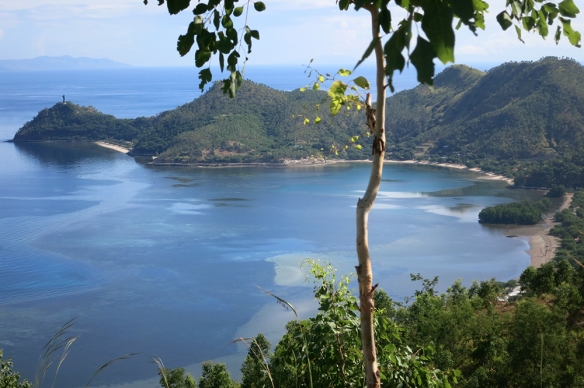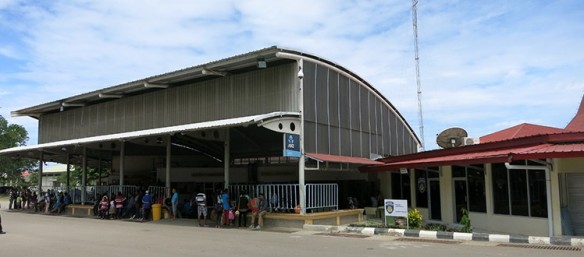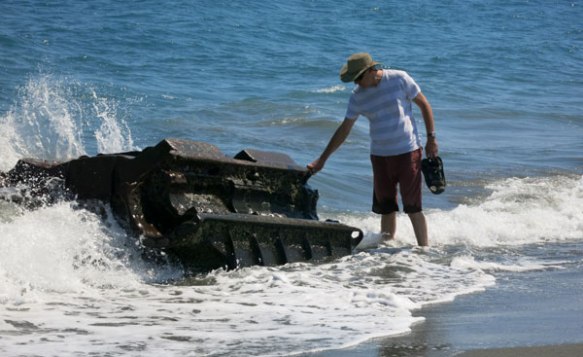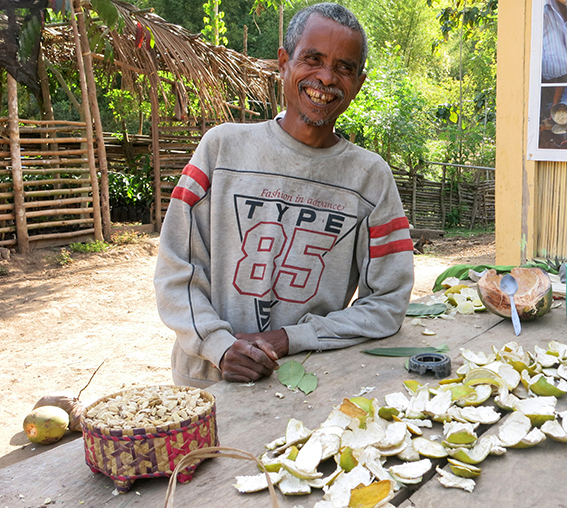‘How old are you?’ asked the hairdresser. She was Indonesian, like nearly all hairdressers in Dili. I was the only customer. The power had gone out which meant a cold wash and no blow dry. Never mind. A young Timorese assistant hovered nearby with an older Chinese woman, perhaps the owner.

Still working: our landlord’s mother sweeps the yard with a traditional broom.
‘Fifty-nine,’ I said, although the $10 haircut had made me look much younger – like about six. There were small gasps. ‘You are very healthy,’ the young Timorese woman said, as if it was a miracle that I was still out and about. And to her it may have been. Older women are rarely seen on the streets of Dili. They age before their time; by their late sixties, most are dead.
I hope these women – who wear sarongs, chew betel nuts that stain their mouths red, and have survived two and sometimes three occupations of their country – are treated well. I know I am. As an older malae woman, I’ve received nothing but respect in Timor. It starts with hello, which is big in these parts. ’Mana’ – the usual female greeting – is often upgraded to ‘Senora’ or ‘Avo’ (grandmother) in my case. The white hair probably helps.
It’s harder for young malae women, who get pestered and groped, even on their motorbikes. Their freedom seems to bedazzle local boys who are used to girls staying home and doing as they’re told. Continue reading →




















































































